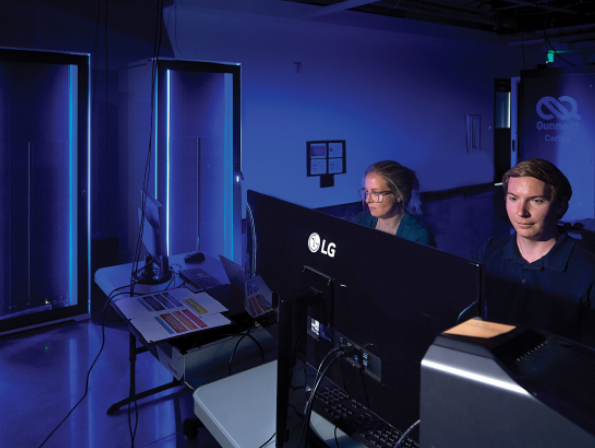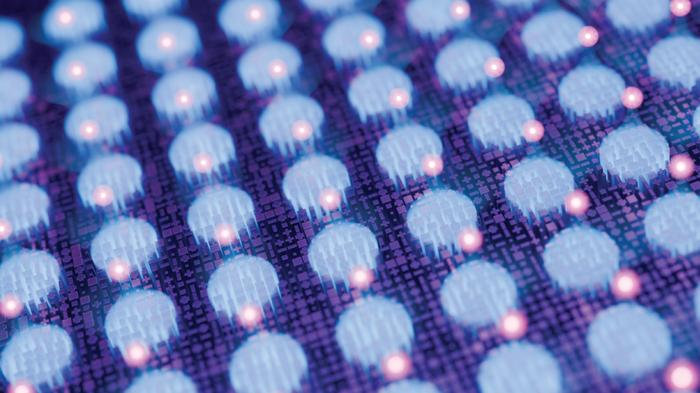Insider Brief:
- Researchers developed a hybrid quantum-classical framework to solve the Single-Impurity Anderson Model (SIAM), a key model for understanding electron behavior in strongly correlated materials
- By using quantum computing to calculate the Green’s function and classical computing to manage less intensive tasks, the study demonstrates how this approach may reduce computational challenges.
- The experiment observed a quantum phase transition in the Hubbard model, showing how materials transition from metallic to insulating states based on electron interaction strength.
- While promising, the study acknowledges limitations such as the current number of qubits in quantum processors and error rates, which need improvement for more complex simulations.
The Single-Impurity Anderson Model (SIAM) has long been a cornerstone for understanding how impurities affect the behavior of electrons in quantum materials. Solving this model may provide deeper insights in material science, yet its complexity has made it a formidable challenging for classical computing. In a recent study published in Physical Review Letters, researchers from the Shenzhen Institute for Quantum Science and Engineering presented a hybrid quantum-classical approach to tackle this problem head-on. By combining both quantum computing and classical algorithms, they developed a framework to solve SIAM–a new method to model electron interactions in strongly correlated materials. According to the study, this research could improve our ability to analyze complex quantum systems, relevant for fields such as material science, computational chemistry, and beyond.
The Anderson Model and Why Classical Methods Fall Short
As highlighted in the study, understanding the behavior of electrons in strongly correlated materials has long posed a significant challenge for scientists. These materials, where electron-electron interactions are crucial, play a vital role in applications ranging from superconductors to high-performance batteries. Traditional approaches, such as density functional theory (DFT), often fall short because they assume independent electron behavior, an assumption that breaks down in strongly correlated systems. To address this, the researchers implemented a hybrid quantum-classical approach, leveraging quantum computers to handle the most computationally intensive aspects. Specifically, they used a five-qubit nuclear magnetic resonance (NMR) quantum processor to calculate the Green’s function, a key mathematical construct used to study electron behavior, which classical computers struggle to compute efficiently.

Central to this study is the Single-Impurity Anderson Model (SIAM), a theoretical model describing the interaction between a localized impurity and a “bath” of conduction electrons. This model is essential for understanding materials where small impurities can drastically affect properties like conductivity and magnetism. As the study notes, SIAM is one of the simplest models in quantum mechanics, but classical methods become intractable as the number of correlated orbitals increases. The hybrid quantum-classical approach shines by using quantum computing to solve the most resource-intensive aspect—the Green’s function—allowing classical computers to handle the remaining tasks, thus significantly reducing the overall computational load.
A Closer Look at the Experiment
While hybrid quantum-classical approaches have been explored in theory, this study represents one of the first successful implementations in a physical experiment. The researchers combined quantum and classical algorithms through a feedback loop, allowing both systems to continuously communicate and refine their results. This iterative approach enabled the team to observe one of the most exciting outcomes of the study—a quantum phase transition in the famous Hubbard model, where a material transitions from a metallic state to an insulating phase as electron interaction strength increases. Simulating such transitions is important for developing materials with specific electrical properties, including superconductors and semiconductors.
The experiment, conducted using a five-qubit NMR quantum processor, involved the quantum computer calculating the Green’s function while the classical computer updated the “bath” parameters (representing the environment around the impurity). This process was repeated until the system reached a self-consistent solution. By tweaking the electron interaction strength, the team observed how weak interactions resulted in a metallic state with free-flowing electrons, while stronger interactions caused a transition to a Mott insulator, where electron movement was blocked due to repulsion.
This experiment highlights the potential of hybrid systems to scale as more qubits are added to quantum processors. As the research team pointed out, maturing quantum technology could make it possible to simulate far more complex models, such as crystalline materials with thousands of atoms or intricate molecular structures, paving the way for future advancements in quantum computing applications.
Prospects and Challenges for Hybrid Quantum-Classical Systems
The team emphasizes that this study may serve as a promising step toward integrating quantum computing into practical applications. Although quantum computers are still in the noisy intermediate-scale quantum era—prone to errors and limited by the number of qubits—this hybrid approach demonstrates that quantum devices may be able to solve parts of problems that are beyond the capabilities of classical systems. As the number of qubits in quantum processors increases, so too may the scope of the problems that researchers can address, with implications for condensed matter physics, material science, pharmaceuticals, and more.
However, the researchers noted several limitations that must be addressed for this hybrid approach to reach its full potential. The limited number of qubits in current quantum devices restricts the complexity of the models that can be simulated. In this study, the five-qubit quantum processor was sufficient for demonstrating basic principles, but much larger systems will be needed for more intricate simulations. Additionally, quantum computers are prone to errors in processes like measuring the Green’s function, which can affect the accuracy of results over time. Overcoming these challenges—through improved error correction, better qubit control, and enhanced precision—will be necessary for expanding the applicability of hybrid quantum-classical systems to even more complex and computationally demanding problems.
Future Outlook on Quantum-Classic Integration
As exemplified in the study, a hybrid quantum-classical approach to solving the Single-Impurity Anderson Model may be a plausible solution to a longstanding challenge in understanding strongly correlated materials. By using quantum computing to tackle the computationally intensive aspects of the problem, which relying on classical computation to do what it does best, this method may reduce the burden on classical systems while presenting a more efficient analysis of electron behavior. The experiment’s insights into quantum phase transitions, specifically in the Hubbard model, which are necessary for developing materials with targeted electrical properties. As quantum technology continues to evolve, hybrid quantum-classical frameworks may offer a more viable solution for problems related to materials science and computational chemistry.
Contributing authors on this study include Xinfang Nie, Xuanran Zhu, Yu-ang Fan, Xinyue Long, Hongfeng Liu, Keyi Huang, Cheng Xi, Liangyu Che, Yuxuan Zheng, Yufang Feng, Xiaodong Yang, and Dawei Lu.

















